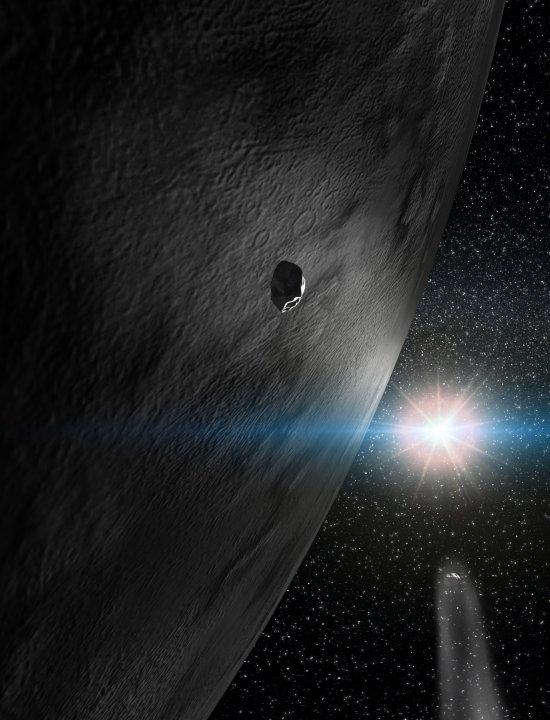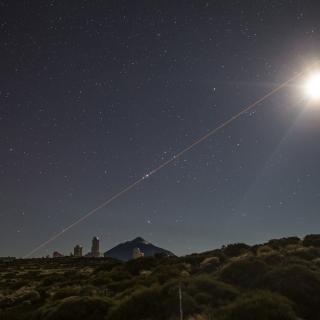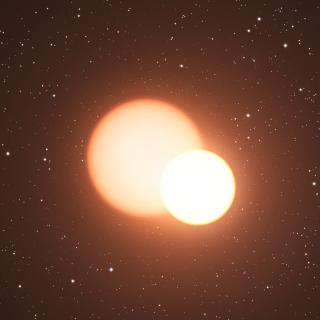A thin layer of ice and complex organic molecules covers the surface the asteroid Themis (the largest of a family of asteroids to which it gives its name), a rocky body200 kilometres in diameter orbiting between Mars and Jupiter. According to an international team of astronomers, the ice particles are uniformly distributed over the entire surface of the asteroid in even greater proportions than the water detected on the Moon. This unexpected discovery, which could explain the development of life on Earth, has been published by the scientific journal Nature.
‘A thin layer of frost covers everything,’ explains Javier Licandro, an asteroid expert at the Instituto de Astrofísica de Canarias (IAC) who has taken part in the research. This makes 24 Themis unique among the millions of objects that populate the asteroid belt. Through observations in the infrared 3 micron band, the researcher underlines, ‘we have discovered abundant primordial ice that is millions of years old.’
Some cosmogonical theories indicate that the Earth’s water could have been supplied by asteroids, so that the salts and water that have been found in some meteorites would explain the origin of the oceans. And, even though the presence of water had been deduced by their cometary activity, it had never been found in these objects. Neither had molecules of the carbon chain, so complex and essentials for life, been detected. ‘The possible presence of organic compounds in this asteroid,’ say the authors of the article, ‘make it even more interesting.’
The ice line redefined
‘We’re truly surprised by this finding; we really didn’t expect it. In principle, we were only looking for hydrated silicates, for traces of water,’ Licandro admits. The extensive presence of water on 24 Themis was quite unexpected given its proximity to the Sun: 3.2 astronomical units; that is to say, more than three times the mean distance between the Earth and our star. At this distance, ‘it was thought that the high temperatures would have caused all the ice to have sublimated and escaped from the asteroid.’ This discovery reduces the distance of the so-called “ice line”, the limit at which the existence of surface ice was thought to be possible.
24 Themis is located in the outer part of the asteroid belt, the region most distant from the Earth. It is the “father” of the Themis family, a group of asteroids originating from a huge collision that took place around a thousand million years ago. With a diameter of 200 kilometres, its size makes it a good candidate for astronomical observation. Unlike Ceres, which, with a diameter of a thousand kilometres, is the largest object in the asteroid belt and is presumed to possess an internal layer of water, 24 Themis is the first asteroid to reveal ice so uniformly distributed.
Within the Themis family are two small objects with cometary activity whose tails are thought to be formed by dust and the evaporation of ice. 24 Themis, in contrast, shows no cometary activity. For the research team, the unusual behaviour of these two members of the family made observation of 24 Themis a priority in order to reveal the composition of its surface.
With the aid of infrared observations carried out with NASA’s 3 metre Infrared Telescope Facility (IRTF), the ice was detected over the entire surface of the asteroid. ‘This characteristic is considerably different from that of any other asteroid, meteorite or mineral sample at our disposal,’ states the article.
The researchers examine various hypotheses when explaining the presence of ice on the surface of 24 Themis. One of these is the possible existence of stable ice in the inner layers, a kind of subterranean reserve that would filter through during the erosion brought about by small meteoritic impacts on the asteroid. Another explanation points towards the formation of a thin layer of frost as a consequence of the rapid evaporation of the interior ice. Latest research indicates that 24 Themis might have preserved the ice in its subsoil, just below the surface, since the earliest beginnings of the Solar System.
Contact:
Javier Licandro (IAC-Universidad de La Laguna)
Telephone: +34 922605748
Email: jlicandr [at] iac.es (jlicandr[at]iac[dot]es)



